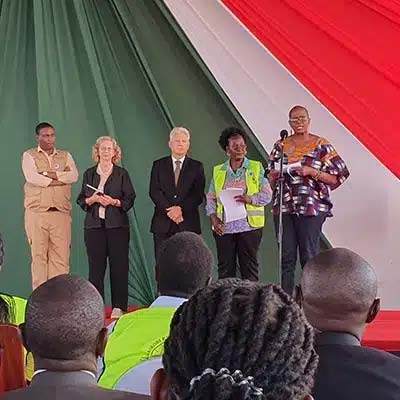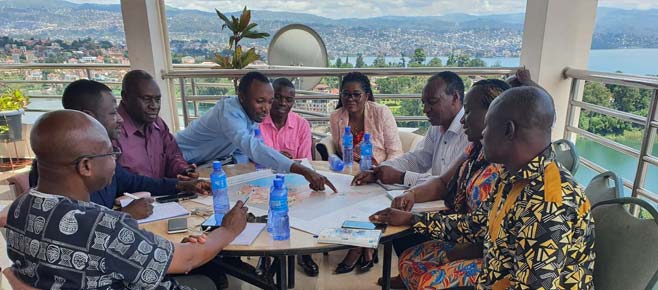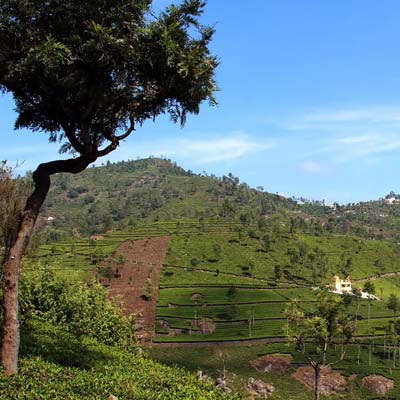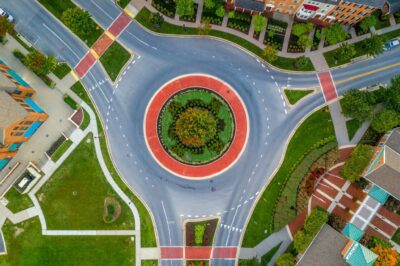Keys to Accelerating Nature-Based Solutions Integration into Water Projects

Indigenous communities in the Andean highlands have been leveraging natural ecosystems to manage water resources since the dawn of civilization. The region’s unique and extreme seasonal precipitation acted as a catalyst for hydrological innovations, and over time its people cultivated deep knowledge of surface and groundwater systems. Within this region,
The capital Lima, home to over 10 million people, receives just 13mm of annual rainfall. To supply the needs of its growing population, the city relies on three rivers originating in the Andes mountains but the glaciers are receding at unprecedented rates.
NBS is an umbrella term referring to actions that protect, manage, and restore natural capital in ways that address social, economic, and environmental challenges. They offer a way for governments and communities to harness nature’s innate ability to substitute for or enhance infrastructure systems. Integrating NBS into traditional infrastructure projects can help service providers deliver more cost-effective and resilient services.
For cities like Lima, whose current strategies to manage drought – dams, reservoirs, storage under the city – are predicted to be insufficient by as early as 2030, NBS can build stability and resilience while generating co-benefits like job creation and livelihood enhancement.
The Challenge of Getting to Scale: Financing NBS and Improving Decision Making
Despite their proven potential and cost-effectiveness, NBS are still underutilized and under-funded partly because many projects are grant-based and lack long-term financial security. A recent study found that of 156 NBS projects in Latin America and the Caribbean, around 75% rely on grants as a core part of their funding model and 60 percent are still seeking funding.
One avenue to overcome the challenge of long-term sustainability is to secure dedicated funds from utility tariffs. This allows utilities to earmark a portion of the tariff charged to customers for NBS projects. Peru is a leader in this regard. The 2014 Retribution Mechanisms for Ecosystem Services Law (MERESE) allows water utilities to raise tariffs to collect funds for NBS projects that enhance water availability and quality, such as protecting high-altitude wetlands and forests or reforestation. As a result of this law, Sedapal, Lima’s water utility, created in 2015 its own MERESE fund and has already begun implementing NBS.
Integrating NBS into traditional infrastructure (green-gray infrastructure) is also key for unlocking investment and optimizing benefits, but to accelerate this integration, processes need to be in place to generate and capture quantitative evidence on their effectiveness. One method to strengthen planning processes and technical approvals is through the application of cost-benefit analyses, such as WRI’s Green-Gray Assessment (GGA) for example. This method can be used to evaluate the economic and financial performance of NBS by comparing the costs and benefits of investments in traditional infrastructure and green infrastructure.
In Brazil, a GGA conducted in partnership with the State Government of Espirito Santo found that incorporating NBS along with traditional infrastructure could allow Espirito Santo to obtain 50% more economic benefits by cost savings than by using only traditional infrastructure.
Local Communities Are Essential Partners in NBS
Community participation is crucial for the success of NBS efforts. Appropriate and meaningful community engagement helps ensure that solutions are tailored to their specific needs and circumstances. Harnessing local knowledge and traditional practices that may have been ignored otherwise can also potentially lead to better results.
A technical assistance carried out in 2022 by the World Bank for a Peruvian utility, in partnership with the Cities4Forests initiative, reported the importance of strengthening engagement from local communities in the long-term management of NBS. The lack of an established mechanism to enable utilities to directly compensate communities makes these challenges more difficult. This led to the development of three key recommendations:
- Develop a community engagement strategy that considers the full project cycle, including operation and maintenance, as well as mechanisms to identify incentives that are important for the community.
- Provide capacity-building activities to strengthen community organization and help them with the procedural steps to become legally constituted, facilitating direct compensation.
- Apply a territorial approach by partnering with local NGOs, river basin committees, and local and regional governments. This is critical to leveraging resources and building sustainability.
Across Latin America, NBS initiatives are developing a body of best practices to ensure that communities are meaningfully engaged and empowered in ways that can guarantee long-term positive impacts for the community, water utilities, and downstream users. For example, the Brazilian water utility Companhia de Saneamento de Minas Gerais (COPASA) is working with communities to better understand the problems landowners face and the vision they have for their territory. EPS Moyobamba, a water utility in the Peruvian Amazon region, engaged with local communities from the first stages of project design to identify their priorities and work together with them throughout implementation. This type of engagement can help build a joint vision on how all parties can benefit from NBS.
The Road Ahead
Momentum is building for making NBS a core part of water management, and utilities are well positioned to take a leading role. Sharing best practices and lessons learned across utilities is one way to facilitate learning, change mindsets, and extend NBS.
In addition, finding new financing mechanisms for NBS, improving decision-making mechanisms and meaningfully engaging communities will promote further development and scaling up of these initiatives.











